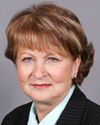I've just gone through a series of questions noting that up until recently that hadn't been a problem.
I guess my question—and maybe I should leave it with you to respond back to the committee—is whether there are other ways, perhaps, than legislation. I mentioned regulation. There are requirements to give electoral officers the power to discern whether or not someone is complying other than through legislation.
I again underline this, Chair, because we have a piece of legislation making up for a flawed piece of legislation. I certainly don't want to be back here in two months, or whenever, after an election to find out this is a problem as well. For the record, we'll state that's why our party did not support Bill C-31. It was a problem, and it remains a problem.
I will just leave it with our guests to respond if there are other ways—perhaps through regulation—that we can look at this.
The other thing—and we've already heard from our guest on this—is that I understand Mr. Mayrand can't give us a legal opinion on this legislation; that's not his job. So I'm just wondering if the clerk or the chair has had any request to departmental officials, say, from Justice, on the legal aspects of this bill. In other words, are there legal concerns—so we don't end up back here again in a couple months saying we have to have another bill to make up for this bill?
I leave that question for you, and I thank our guests for being here today.



